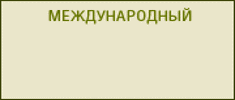Authors
Anisimov Alexander Yu.
|
Degree
|
Cand. Sci. (Econ.), Associate Professor, Deputy Director of Educational and Methodological Work of the Information Technologies Faculty, Associate Professor at Information Management and Information and Communication Technologies Department named after Professor V. V. Dick, Synergy University |
|---|---|
|
E-mail
|
anisimov_au@mail.ru |
|
Location
|
Moscow, Russia |
|
Articles
|
Modification of the convolutional neural network architecture for determining the category of a land plot from satellite imagesCorrect classification of land plots by their types, for example, such as forest, agricultural, urbanized, water bodies, and others, is relevant for remote sensing of the Earth and the development of geoinformation technologies. The accuracy and reliability of the results of such categorization are of paramount importance for the efficient use of natural resources, rational land use, and environmental monitoring. The article presents an approach to solving the problem of categorizing land plots based on satellite images by applying a modified standard model of a convolutional neural network. The main attention is paid to the modification of the network architecture in order to improve the accuracy of land plot classification. The authors propose an approach to training and optimizing the network in order to solve this problem. The stages of data preparation are discussed in detail, including preprocessing satellite images, annotating them, and creating high-quality training samples. The presented approaches to network training and optimization include the use of modern regularization techniques, adaptive learning methods, and class balancing strategies, which allows efficient processing of both large amounts of data and more limited sets of specific information. To test the approach’s operability and obtain the values of quality indicators, experiments were conducted to train and test the model on various sets of satellite image data. The results of the experiment suggest that the accuracy of categorization achieved on the basis of the created model meets the requirements of the Federal Service for State Registration, Cadastre and Cartography for studying remote Territories for the suitability of land for their rational use, and the proposed method can be used to solve practical problems. Read more... Generalized approach to building fuzzy bioinspired models for situational project managementWhen managing complex projects related to the development and organization of production of innovative products, the decision-making process is influenced by many situational aspects. This complicates the assessment of the quality of decisions, which are usually multi-variant and require taking into account random influences. In such cases, a significant effect can be achieved by using bioinspired methods that allow one to find a solution acceptable for a specific situation, in which elements of fuzzy set theory are used to describe NON-factors. The article proposes a generalized approach to creating a model based on the specified methods, which is intended to support decision-making in managing an innovative project. This model is distinguished by the comprehensive use of fuzzy bioinspired methods for selecting and justifying options for action in strategic and operational planning and situational management of project activities, taking into account the general and specific characteristics of the project stages, as well as the dynamic nature of external and internal factors. The proposed approach forms the basis of the developed fuzzy method for selecting equipment for conducting experimental design work and organizing the production of innovative products using a model of the behavior of a pack of wolves during hunting. The method is distinguished by the use of a fuzzy Euclidean measure of proximity between the quality indicators of the options being evaluated and the three best ones selected at a given iteration (alpha, beta, and delta solutions) to determine the direction of the search for a rational set of equipment, a modification of the rules for searching for solutions (movement of individuals) based on the consideration of the “depth of matches” and the increment of the effect, including for finding a reasonable balance between directed and random search, and the use of a base of fuzzy production rules when choosing a method for forming the basis for an alpha solution at subsequent iterations. The method is implemented in Python 3.12.0. The effectiveness of the proposed approach is confirmed by data from a computational experiment. Read more... |



